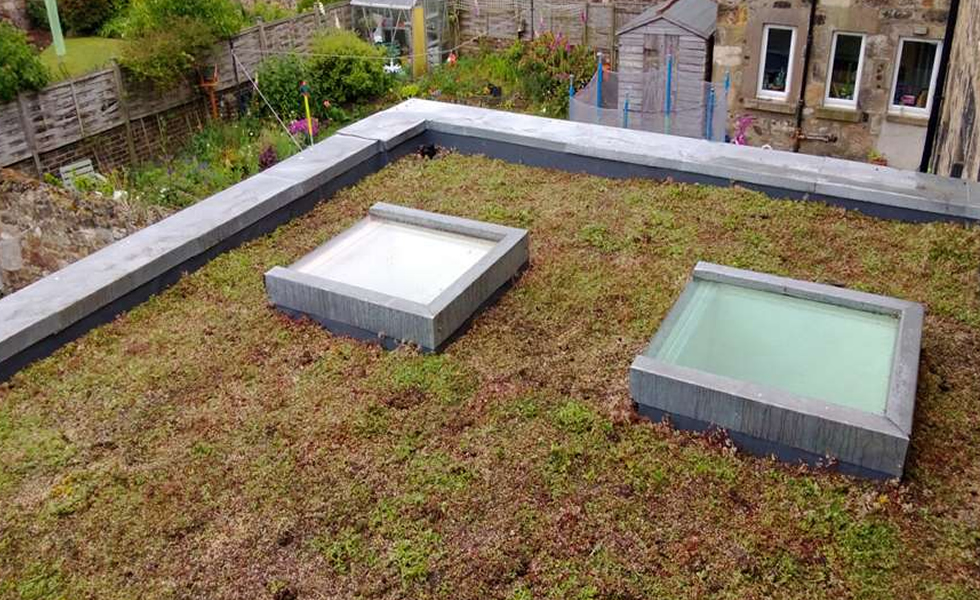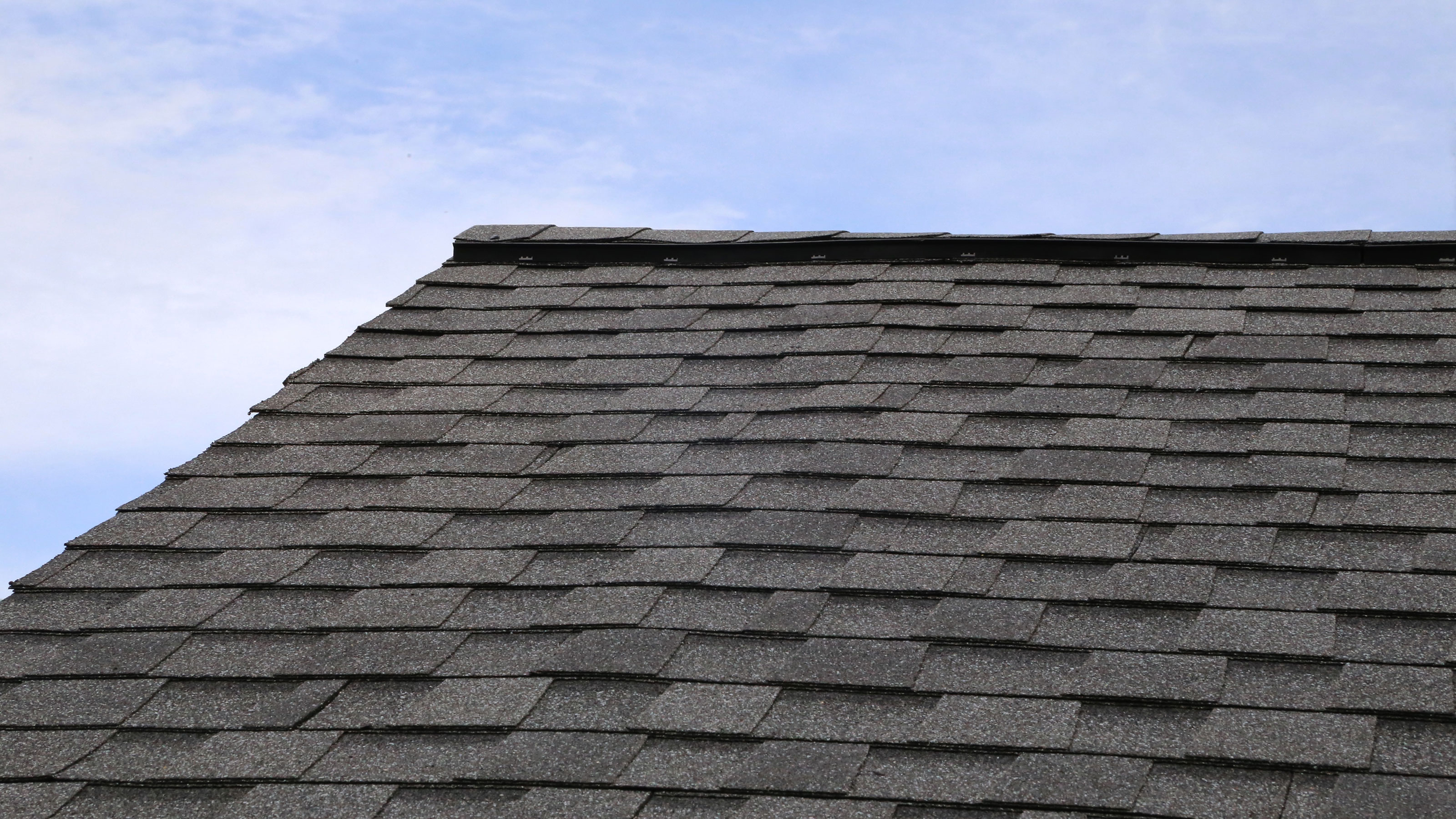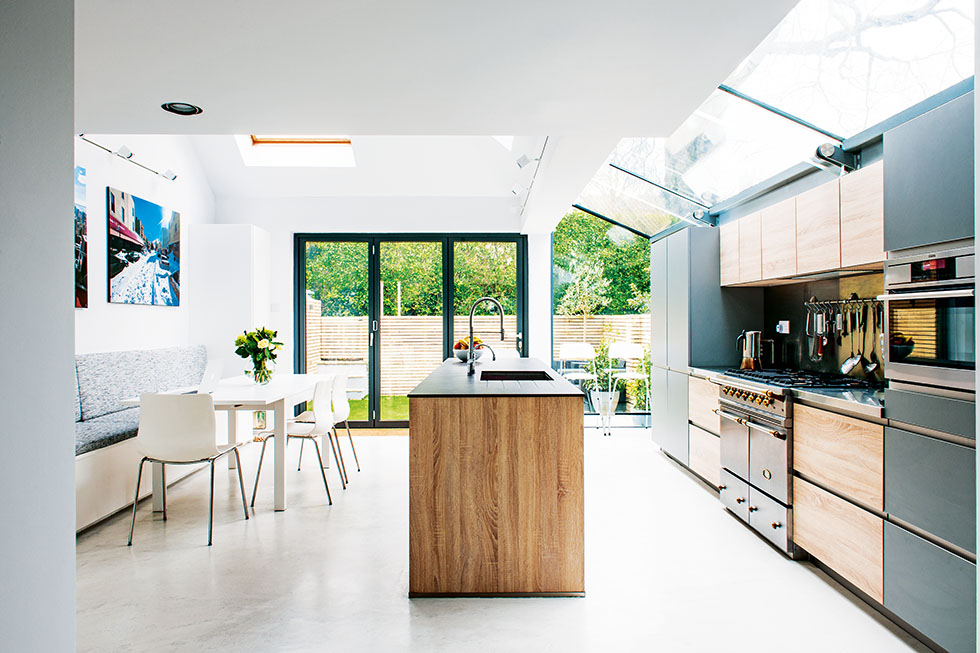
Content Supplied by Q-Lawns
Making hard surfaces into water retention areas will make rainwater easier to manage.
It will be a long time before Britain forgets the heart-breaking damage caused to homes, businesses and infrastructure by flooding in the early part of 2014.
Fingers have been pointed at various organisations for failing to dredge rivers or for building on floodplains, but the truth is; there are just too many water-resistant surfaces in this green and pleasant land. If water can’t soak into a surface, it either sits on top of it, or it gushes off into already overloaded drains and waterways. Too much water arriving in too much of a hurry overwhelms both natural and man-made drainage systems and puts homes and businesses at risk of flooding.
On the ground, we can opt for more lawns and fewer concrete gardens. On our buildings, we can slow the rate of rainwater runoff from roofs by covering them with an absorbent layer. In this way, excess rainwater water can be held and released slowly into SUDS or waterways – just as Mother Nature intended.
The most eco-friendly absorbent layer there ever could be – is a living green roof.
What is a green roof?
In simple terms, a green roof is just an ordinary roof that has been deliberately covered with plants.
The green roof build up sits on top of standard waterproofing and normally consists of a drainage layer and a layer of growing medium for the plants to grow into. It may also include a water retention layer to support the plants during a period of drought.
Green roofs have many benefits including
- Rainwater management
- Creating wildlife habitat
- Absorbing greenhouse gasses
- Insulating the building against heat, cold and noise
- Extending the life of the waterproofing
Green roofs are not just for new-builds
Many buildings in the UK could be retro-fitted with a green roof for a reasonable price and, according to the green roof developers guide, this simple action can add value to a building.
Provided that the waterproofing is intact and in good condition, the roof is sturdy enough to support the weight of the green roof build up and there is good safe access for the installation and maintenance, then there is no reason why a green roof cannot be retrofitted on to an existing building.
How to create a living green roof
The important part of creating a green roof is not in the construction, it’s in the design.
Green roof design should be broken down into 15 bite-sized chunks, all of which are relatively easy to complete. Here is my 15 point checklist for green roof design
15 point checklist for green roof design and installation
1. Check the maximum loading capacity (including live loading) of the roof? Consult a structural engineer if you are unsure. For a green roof made from sedum blanket, the roof will need to support at least 120Kg per square metre. This includes live loading such as snow or a maintenance person.
2. What is the roof pitch? –if the angle is over 10 degrees you should ask whoever is supplying you with materials whether you need an irrigations system or any extra fixings.
3. Is the waterproofing in good condition? A green roof build up won’t fix leaks.
4. Is there safe access for installing and maintaining the roof? Green roof materials can be heavy, bulky and dirty. Be sure you can lift them on to the roof without hurting yourself or anyone else. Maintenance is simple if a green roof is designed carefully but nevertheless you will need to feed the plants and clear the drains least once a year.
5. Is the roof well drained? address any problems with puddling before adding a green roof build up
6. Are there suitable edgings to protect against wind uplift and help keep materials in place?
7. How will you lift green roof components on to the roof?
8. What depth of growing medium can the roof support? This will determine what plants can be grown up there. For sedums 20mm of substrate is enough and it is usually incorporated in sedum mats. For wild flowers, 150mm substrate is advisable; expect this depth of growing medium to weigh around 250Kg per square metre.
9. Is the roof sunny or shaded? Windswept or sheltered? Some plants are fussy about aspect. Sedums for example will put up with anything except shade and waterlogging.
10. How quickly do you want full plant coverage? Seeding or plug plants take longer to establish than vegetation mats
11. Will you need an irrigation system? Once they’re established, drought tolerant plants will only need watering in extremely dry periods.
12. How much time /budget do you have available for maintenance? A sedum green roof needs feeding every spring. Unwanted plants must be removed and drainage outlets and gutters cleared each autumn. Other planting plans might need a different maintenance regime. If you’re not confident working at heights you can use a specialised contractor.
13. Which plants are best suited to questions 8-12? (download the free design guide mentioned at the end of this article ideas for planting)
14. Are you confident to install the green roof build up yourself or will you need a qualified contractor? (I recommend getting help if you’ve not been involved with green roofing before)
15. Is this affordable? Balance the installation costs with the savings on heating etc, remember that green roofing will at least double the life of the waterproofing and it will increase the value of the building. Don’t forget to factor in maintenance costs if you’re not confident about working on the roof yourself.
Enviromat have created a handy guide to designing an easy-maintenance green roof. Click here to download it from their website.
Join our newsletter
Get small space home decor ideas, celeb inspiration, DIY tips and more, straight to your inbox!
-
 Repairing a roof – everything you need to know
Repairing a roof – everything you need to knowThe ins and out of repairing a roof, from identifying the problem to the material you'll need.
By Anna Cottrell
-
 How much do roof repairs cost? Whether to replace or fix yours
How much do roof repairs cost? Whether to replace or fix yoursIf your home doesn’t require a roof replacement, what will different roof repairs cost you?
By Carol J. Alexander
-
 Real home: a glazed-roof kitchen extension
Real home: a glazed-roof kitchen extensionLara and Andrew Dearman extended their property sideways to create a practical family room with a pared-back Scandinavian style
By Debbie Jeffery